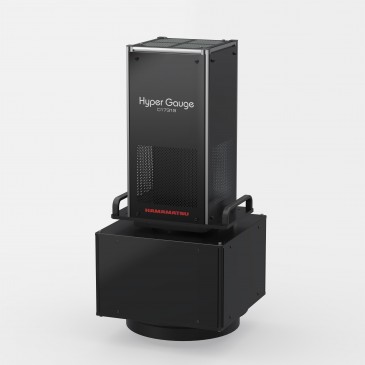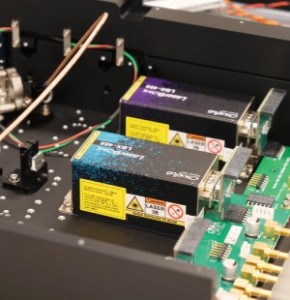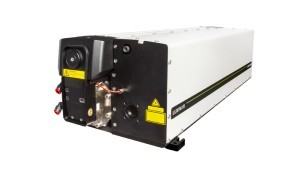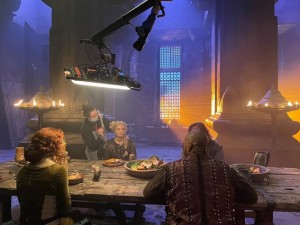
Pi Lighting is a Swiss firm made up of lighting experts who provide consultancy in LED technology for "Anywhere there's LEDs" system manufacturers, including lighting, surface treatment, embedded systems, and LED communications. In this article, Jérémy Picot-Clémente, EPIC’s Photonics Technologies Program Manager, talks to Benoit Bataillou, CTO of Pi Lighting about his career, challenges, company development and what he would have done differently along the way.
Early career
In 1999, after graduating with an MSc in Physics from Université Savoie Mont Blanc, Benoit began a PhD in Physics at Université Joseph Fourier (Grenoble, France). As part of his PhD, he worked at Soitec, a French based semiconductor materials company, researching buried interfaces and mechanisms of wafer bonding, which involved using the European Synchrotron Radiation Facility (ESRF). After his PhD, he went briefly to IMEC in Belgium, as a post doc, where he worked on bonding laser diodes to InP.
Having enjoyed the experience of being at the interface of academia and industry, in 2006, he joined Philips Research as a research scientist working on plasmonic studies, wafer bonding and semiconductor research. one year later, he became a senior scientist for NXP Semiconductors, formerly a division of Philips corporate research, where he was involved in LED modelling, LED physics, and smart methods to circumvent LED limitations with the aim of developing IPs on new LED technology.
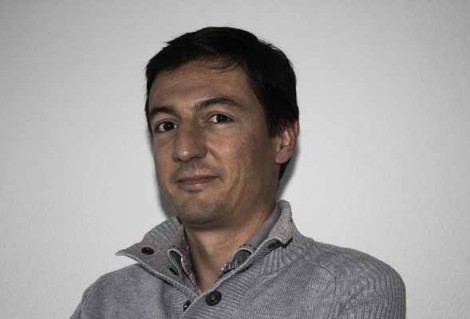
From 2008 to 2014, Benoit worked as Technology Manager for Philips Lighting, in Lyon, France, responsible for providing expertise on LED technology & applications. In the beginning the work was mainly research involving showing the potential and limits of the technology, or just trying to figure out if “will LEDs replace other technologies” But soon after he started, a strategic decision was made to move wholescale into LEDs, and they literally witnessed the birth of the LED industry take off. As a result, his role changed organically from research to more the applied research, even business side of things – helping to build a supply chain, being support for large scale purchasing of LEDs, and defining quality concepts. Although this was a useful and interesting experience, after 7 years, the industry changed into a more centralized standard industry structure, where he felt less helpful. The industry was mature by now, so Benoit decided to look for a new job.
Accordingly, he began talking to an old friend, a serial entrepreneur, about the possibility of setting up his own LED consultancy – a perfectly feasible plan as his job at Phillips was basically an internal consultant, which had enabled him to build up a large network of contacts in the LED industry. The result was Pi Lighting, established in 2015 with Benoit as CTO.
Company development
After a short time testing the waters in France, they decided to move to Switzerland, where they set up Pi Lighting. Over the last 7 years, the company has developed services in the following areas:
Advanced R&D, mainly for exotic applications and innovations, including ATEX luminaires (complete lighting units), surface treatments, self-charging lamps, spectrum on demand, circadian (i.e., lighting designed to have a biological impact on the human circadian system); Li-fi, customized horticulture, Big Data & AI for Lighting. An example of one of the results of our colour calculations can be shown, for broadcast market, on the light quality on Rosco products, which here were applies to The Witcher series (picture shown above). Picture courtesy of Rosco/DMG.
R&D support: includes implementation of latest LED technologies, performance improvements, design for cost reduction. Product upgrade for optimized performances, dedicated training for R6D teams, and generic “R&D Q&A”, to provide a contact point for customer engineers to get support.
Technology surveys, e.g., for customized benchmarks, product positioning, and technological surveys on specific subjects.
Quality & Reliability: to determine product failure rates & life, design for reliability, and advanced models to evaluate and improve quality, reliability & safety of customers’ LED products, including statistical information.
Customized software development: professional customized tools for R&D & production, including tools for optimizing architectures, reliability improvement and algorithms for multichannel lighting systems for calibrations and advanced controls.
As Benoit explained, with the fall in the cost of LEDs, they started to specialize in the exotic and niche markets and became involved in areas such as lighting for broadcasting, surface treatments, and special lighting that involved more maths and statistics. Then, in 2016, they were invited to help develop a model of a full LED system for the EU’s DELPHI4LED project, which was set up to help the lighting industry reduce costs, improve product performance while reducing time to market and enlarging the product range.
In 2021 they started a second EU project, AI-TWILIGHT, which was created to merge the virtual and physical worlds to pave the way for innovations in fields where the European lighting industry is competitive. For this project, Pi Lighting participates in the development of self-learning ‘digital twins’ of lighting systems, i.e., a virtual representation of asystem that spans its lifecycle, is updated from real-time data, and uses simulation, machine learning and reasoning to help decision-making. In this case the aim is to use the digital twins to predict performance and lifetime of product and infrastructure design and management for automotive, horticulture, general and street lighting applications.
Challenges
For Benoit, Pi Lighting’s two main challenges are recruitment and resource management. Like most other photonics companies, recruiting personnel with the right talents and experience is a continual challenge. As they are a small company, their ideal candidates are those with a PhD, at least 10 years’ experience and able to be completely self-sufficient. Finding the right people has been quite a task and has become even more so due to post- COVID growth and the need to support their overworked engineers and software technicians.
As regards R&D, in order to get to know the customer and understand exactly what they want and build the trust, the delay between a statement of interest and a firm contract in R&D can take anything up to a year. Apart from being costly and bad for cash flow, the time spent on R&D mitigates against finding and working with new customers.
The Future
For Benoit, Pi Lighting’s future lies in two main areas. The first is in the exotic and executive niche markets, particularly LEDs for surface modifications and for professional customized tools for R&D & production. In this regard, they have developed their own internal software structure, which enables them to address an extremely large number of customer requirements, for example, in relation to calibration tools for LED lighting systems that enable calibration of the different mix of colours.
The second area is in relation to applications not directly related to their core services. From the very beginning, Benoit encouraged his team to participate in a concept imported from Philips R&D methods, the Friday afternoon ‘fun’ sessions to conduct experiments with the technology outside of the main scope. From one of these sessions, they developed a type of software robot based on various algorithms they thought could be useful for some specialist lighting applications. To their surprise, a fintech company expressed interest in using the software and the maths for their own financial operations and after 2 years of development, the system is now up and running, using at their will models Pi Lighting developed. Having established a successful track record, Pi Lighting is hopeful of finding more customers for their partner.
More recently, again as a result of a such sessions and interactions with several laboratories and customers, the team came up with a circadian app that determines the quantity and quality of light an individual is exposed to during the day. It is well known that light impacts human health by controlling the body’s circadian system, thereby effecting affecting mood and perception, reducing depression and improving sleep patterns. The idea of the app is to enable individuals to make sure they are receiving enough good quality light in order to maintain good health and regular sleeping patterns.
The first version was tested on Smartwatch but was found not to be very user friendly. It was then tested in an android mobile phone with much better results. Testing is ongoing on the Apple iPhone and there are plans to launch the app in Autumn 2022.
If you could start again, what would you do differently?
“The Value of strategy. In my days at Phillips, I was very critical of the three-year strategy plans because everything would change and constantly. there was little or no continuity. But I learnt I was wrong, and the value of such exercises. I realized giving a direction actually helps. For this reason, I think it would have been better to engage in a bit more long-term planning” On some subjects, we now pay the price of lack of earlier planning
I’d also spend more time in recruiting my team. I’ve made some mistakes taking on sub-contractors who were not up to the job. In our business most of our marketing is by word-of-mouth, so employing anyone problematic can have disastrous consequences on the company image and future business. And talents are difficult to find.
What’s your advice for the next generation of entrepreneurs?
First, you can’t do everything yourself so make sure you have good people around you with skills and expertise in managing other parts of the company, particularly finance.
Second, know your weaknesses and your strengths. Although it’s important to improve your weaknesses, it’s probably more important to spend more time improving your strengths.
Third, learn to “half listen”. Listen to advice, but when you build a company, you will hear a lot of friendly advice saying, “don’t do it”. Learn to ignore the nay-sayers and listen to real positive advice. And go for it
Written by Jérémy Picot-Clémente, EPIC’s Photonics Technologies Program Manager.




































 Back to Features
Back to Features